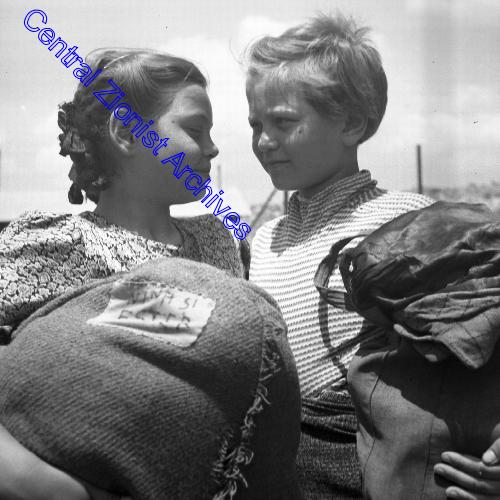
The Jewish leadership in Romania continued to operate during World War II, and towards the end of the war it focused on the demand to return Jews deported to Transnistria and allow some of them to immigrate to Palestine. In March 1944, the liberation of Transnistria began by the Soviet army, and on March 14, Romanian ruler Ion Antonescu reversed his decision not to allow the deported Jews to return to Romania. A Jewish committee from Bucharest succeeded in repatriating 2,518 Jews from Transnistria to Romania. The efforts of the Romanian Jewish leadership were somewhat successful, and a total of about 1,200 refugees arrived in Palestine from Transnistria, some in March and April 1944 on the ships, 'Milka' and 'Maritza'.
At that time, the refugee problem intensified. There were groups of Jews who had fled from Hungary and northern Transylvania, where the deportees to Auschwitz were in full force, to Romania. On May 9, the Romanian government authorized the Jewish Agency to set up an immigration office to assist Romanian Jews and Jews from central and southern Europe. Avraham Leib Zissu, who headed the ministry, was allowed to give these refugees identity cards on behalf of the ministry, on the condition that he would arrange them to emigrate. Antonescu himself approved the establishment of the ministry, and in his concluding letter, four ships (Kazabek, Morina, Bulbul and Mefkura) were permitted to sail under a foreign flag from Romania, carrying orphans from Transnistria and Jewish refugees from other countries. The journey from Romania to Turkey was planned on the assumption that the British would allow the passengers to reach Eretz Israel.
At the beginning of July, the ship "Kazabek" sailed from Constanza with 734 immigrants. The other three ships were to sail on August 2 with 1,400 immigrants, and even though that day Turkey cut off its ties with Germany, the three ships sailed the following day. On August 5 the Mefkura was attacked by a German submarine that sank it. Of the 379 illegal immigrants aboard, only four survived. The two other ships managed to reach Haifa port safely, from where survivors were transferred to the immigrants transit station in Atlit.
Atlit was founded in 1903 as one of the moshavot of Baron Rothschild, and in 1909 Aaron Aaronsohn established an agricultural research station there. In 1922, a salt factory was established, and next to it a workers' neighborhood called 'the camp'. At the end of the 1930's, the British established a detention camp in Atlit for immigrants who arrived without a permit and were caught. The British policy was to release the immigrants according to the quota of visas granted, and in the second half of 1942, after all the immigrants were released, the camp served as a transit station for immigrants who arrived legally in Palestine. In 1944, survivors from Romania and Hungary and orphans from Transnistria began arriving in Atlit.